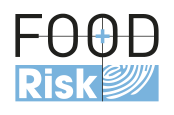The European Food Fraud Network has just published its 2020 annual report.
Fraudulent activities that impact the agri-food chain can pose a risk to consumers.
The number of requests for administrative assistance for suspected food fraud rose from 292 in 2019 to 349 in 2020, an increase of 20%.
Below is the number of suspected cases of fraud by product type:
- Oils and fats: 51 (olive oil was the most frequently reported).
- Fish and fish products: 34 (illegal treatments: undeclared addition of water, nitrates, carbon monoxide)
- Poultry and poultry products: 28
- Honey and royal jelly: 25
- Meat and meat products (excluding poultry): 25
- Food supplements, fortified foods, dietetic foods: 22
- Fruits and vegetables: 21
- Wines and alcoholic beverages: 12
- Plant protection products: 11
- Cephalopods, crustaceans, and related products: 10
- Herbs and spices: 9
- Milk and dairy products: 8
- Other products: 43
Five types of non-compliance were listed:
- 37% concern incorrect labeling, for example when non-extra virgin olive oil is presented as extra virgin.
- 25% concerned falsification of documents or traceability issues.
- 21% concerned replacement/dilution/addition/removal in the product: this refers to the process of mixing or replacing a high-value ingredient with a low-value ingredient, such as watering down wine, for example.
- 13% concern unapproved treatment and/or processes: tuna treated with nitrite.
- 4% concern violation of intellectual property rights: this refers to counterfeit products.
Adulteration is the third most common cause of fraud, accounting for 21% of cases.









